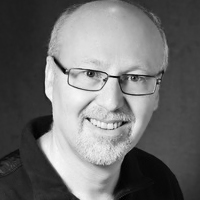Question
After consulting two audiologists I've learned that the double note pitch distortion in the very expensive digital hearing aids I've been sold are the best that can be expected at any price and any brand. That hearing aids are designed for speech clarity and not music appreciation, not to mention music playing and production (can't even tune my instrument with them in) and when doing anything regarding music to take them out. I've even asked about analog aids and distortion and no one seems to know about them. That digital is king. Is this true? If so I will just live without them. Popping them in and out throughout the day seems a little crazy to me. Maybe if they had volume controls or on/off switches I could put up with that but these latest and greatest have none.
Answer
Current digital hearing aids do have a weak point that the older style analog hearing aids did not. This is called the analog to digital converter (sometimes written as the A/D converter). This device in all digital hearing aids, as the name implies, turns speech and music into digits for the hearing aid to analyze. The problem is that the A/D converter becomes overloaded with louder inputs such as those found with music. It turns out that it can handle speech well (even loud speech) but falls severely short with music. I like to compare it to going under a low hanging bridge. If the vehicle is too high, then accidents can occur with resulting distortion. The result is as you explain- double note pitch distortion.
There are several technologies out there that try to simulate the ability of the old-style analog hearing aids and these are not always the premium, top of the line, hearing aids. These involve either raising the bridge of the A/D converter such that music does not become distorted, or reducing the loudest of the music before the A/D converter (and re-establishing it again after).
A simple trick to verify that this is indeed what is happening in your case is to place 2 or 3 pieces of Scotch tape over the microphone openings of your hearing aid. If this improves things, then the distortion is related to the A/D converter and you should see your audiologist for a different hearing aid that can handle the louder inputs of music. Incidentally, some people just keep the Scotch tape in place while listening to, or playing music, and this can work very well. It's "low-tech" but has been used widely to help offset the problems with current digital hearing aids, at least while listening and playing music.
Dr. Chasin is an audiologist and the Director of Auditory Research at the Musicians' Clinics of Canada. He is also the Coordinator of Research at the Canadian Hearing Society, Adjunct Professor at the University of Toronto (in Linguistics), Adjunct Research Assistant Professor at the State University of New York (SUNY) at Buffalo, and an Associate Professor in Audiology at the University of Western Ontario. Dr. Chasin received his B.Sc. in mathematics and linguistics at the University of Toronto, his M.Sc. in Audiology and Speech Sciences at the University of British Columbia, and his Doctor of Audiology (AuD) degree from the Arizona School of Health Sciences. Dr. Chasin serves on the board of several hearing loss prevention organizations such as Hearing, Education, and Awareness for Rockers (H.E.A.R.) and the Association of Adult Musicians with Hearing Loss (AAMHL). He has also served as the editor or a member of the editorial board of several industry and scholarly peer reviewed publications, most recently as the editor in chief of the Canadian Hearing Report. He has served on several governmental and regulatory committees, both at the local and the national level. Dr. Chasin has been involved with hearing and hearing aid assessment since 1981 and is the author of over 200 clinically based articles. He has lectured extensively, and is the author or editor of several books. Dr. Chasin is the author or editor of "Musicians and the Prevention of Hearing Loss", "CIC Handbook", "Noise Control- a primer", "Hear the Music", "Hearing Loss in Musicians", and in 2010, Consumer Handbook of Hearing Loss and Noise. Dr. Chasin has been the recipient of several awards including the 2009 Presidents award from the Canadian Academy of Audiology as well as the 1991 Eve Kassirer Award for outstanding professional achievement from the Canadian Association of Speech Language Pathologists and Audiologists (CASLPA).

